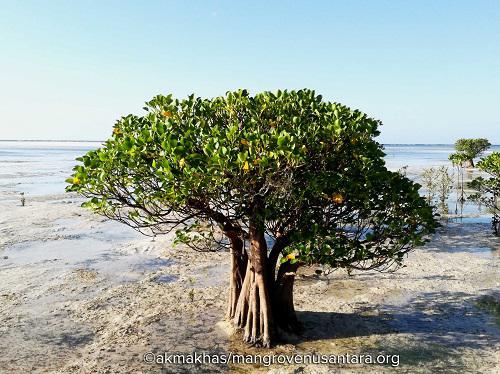Abigail Khesyia Makhas
Other projects
18 Jan 2025
Perception of Integrated Community-Based Mangrove Management and Governance in Sumba, Indonesia
Sumba is the island in East Nusa Tenggara, Indonesia. In the Northern coastal, it has unique mangrove habitat characteristic and it located in the east part of the Wallacea line. Information about mangrove ecosystem in this area are less representative. Tourism development and the lack of awareness of mangrove ecosystem can be a threatening in the future. Moreover, Aegialitis annulata, known as “dwarf mangrove” grow in here, this species population begin to decreasing (IUCN red-list). Exploration is the first step to detailing the mangrove biodiversity in this area, furthermore to provide guidance and knowledge about mangrove for the communities.

Aegialitis annulata in Sumba. © Ari.
Sumba is a wonderful island, located in eastern Indonesia, East Nusa Tenggara province, and part of Savu Sea marine protected area. In the northern part of Sumba, mangrove grows in several unique diverse habitats: mud, sand, and rock. This area has the potential of coastal and marine resources, especially mangrove. However, there is still not many data and information available, especially about the mangrove structure and biodiversity.

Aegialitis annulata.
Aegialitis annulata, known as “dwarf mangrove” grow in Sumba. A. annulata grow only small, found in the part of East Wallacea line. Since 1980 – 2010, this species has been estimated decline 24% from its population (IUCN red-list) and still decreasing until now, due to coastal development. Coastal communities use mangrove as their living; they look for crabs, shells, fishes, and even octopus. They also use the wood of mangrove as firewood and building material. Furthermore, tourism development and the lack of awareness of mangrove ecosystem by the communities (excessive of mangrove cutting) can be threatening in the future. These potentials can be harnessed to support the prosperity of their communities while maintaining the sustainability.
Mangroves offer many important goods and services to human communities. These benefits are often overlooked. Nevertheless, examples are now widespread of the successful management of mangroves, including sustainable, restoration, and protection for conservation purposes. Through this research, we want to provide the complete data and information about the mangrove biodiversity in this area. In addition, the mangrove ecosystem is a source of food and a nurse ground for a number of fish species that are important to local fisheries. Furthermore, we want to bring awareness for all part: government as well as local communities to keep their mangrove, for there are a lot of functions of mangrove for their livelihood. Not only use it, also to keep the sustainability of the mangrove itself.
We will cooperate with some local people who know the area and a great interest in mangrove, to work together. Also, we will have a coordination with the local government. Exploration, research, and mapping are the first step to detailing the mangrove biodiversity in this area, furthermore to provide guidance and knowledge about mangrove for the communities.